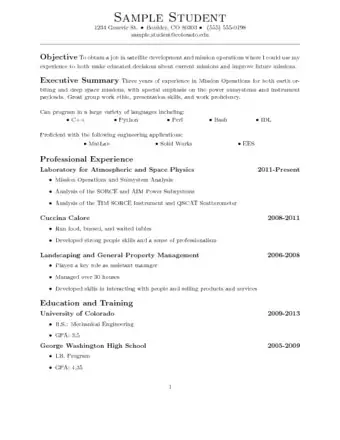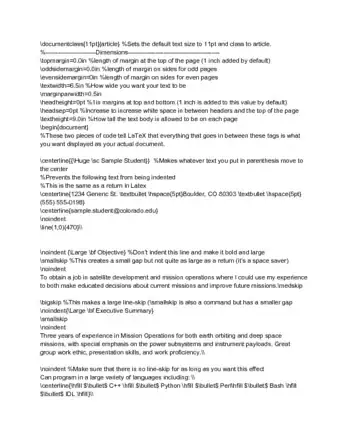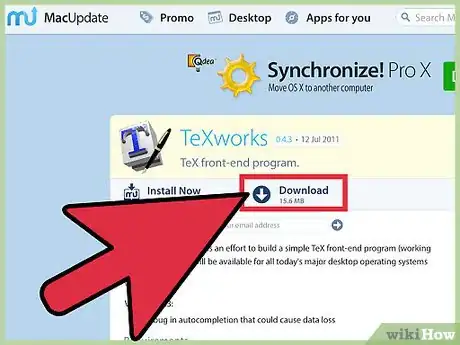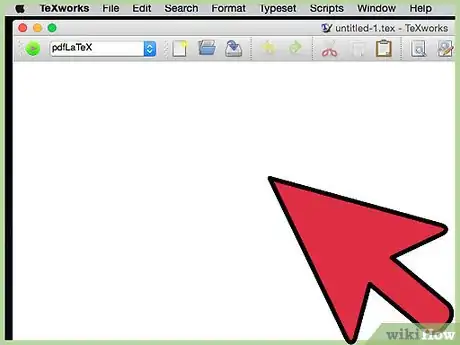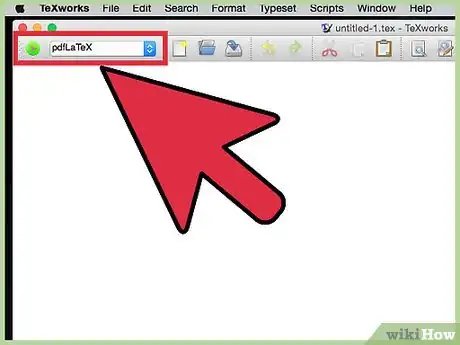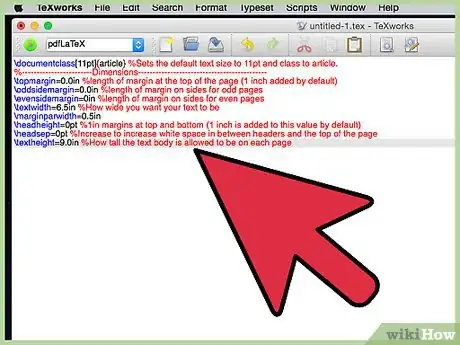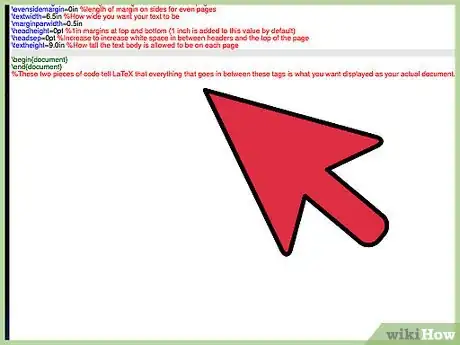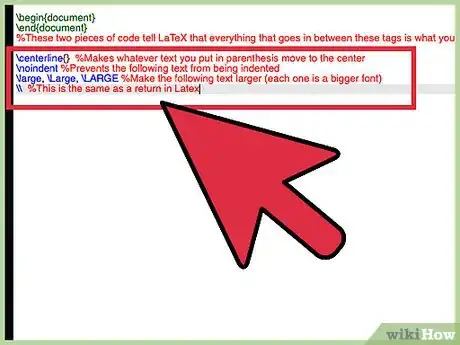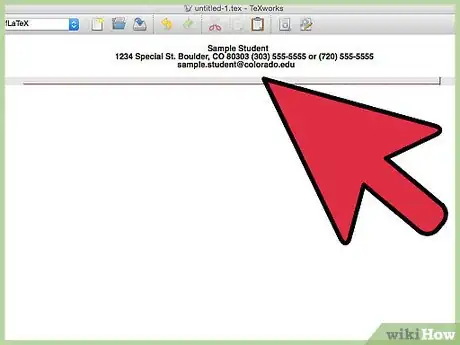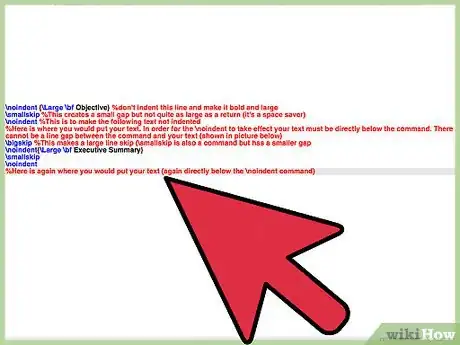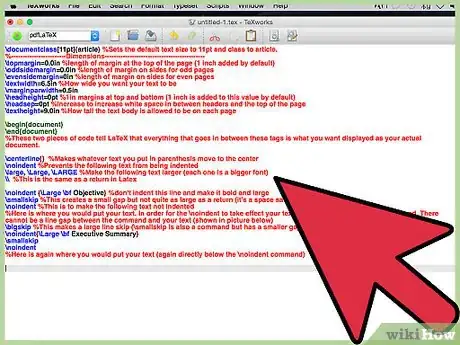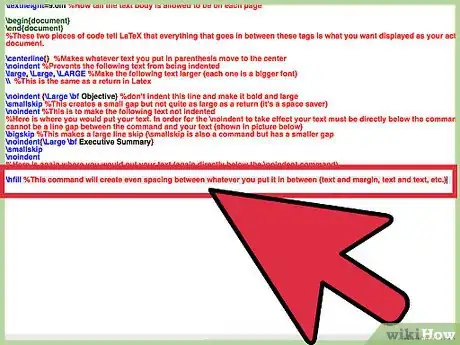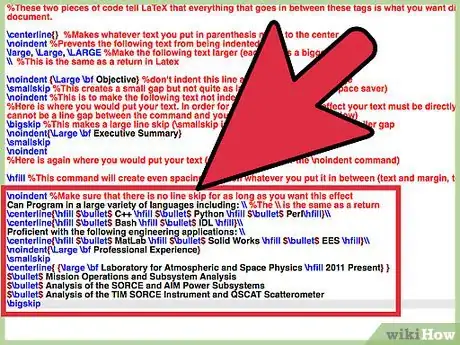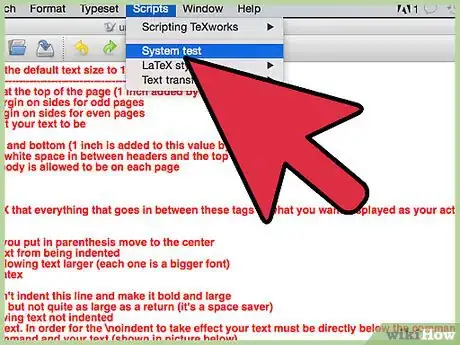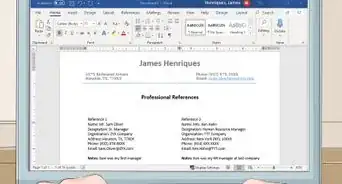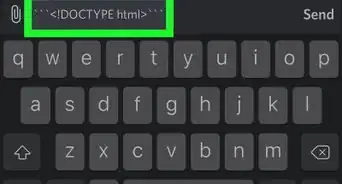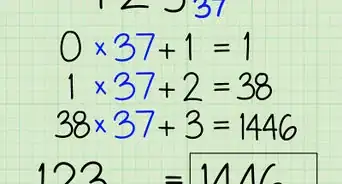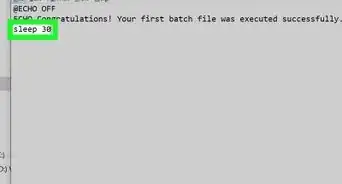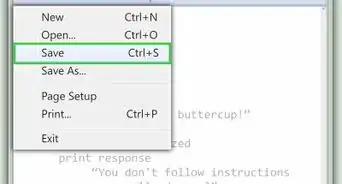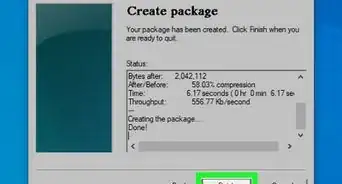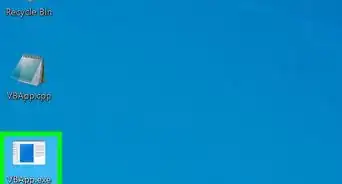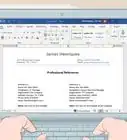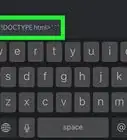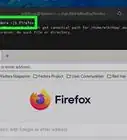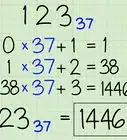X
wikiHow is a “wiki,” similar to Wikipedia, which means that many of our articles are co-written by multiple authors. To create this article, 16 people, some anonymous, worked to edit and improve it over time.
This article has been viewed 153,033 times.
Learn more...
While Microsoft Word can be great, when it comes to writing technical documents like engineering reports, Word is irritating to say the least. LaTeX is a technical document creation program that allows engineers to write technical document without all that worry about formatting. This tutorial will let you create a simple resume in LaTeX in order to give a general introduction to creating LaTeX documents. Here is what you will create.
Steps
Sample Resume and LaTeX Code
Method 1
Method 1 of 7:
Writing a Resume in LaTeX
-
1The first step is to download a free copy of a LaTeX editor. Although any LaTeX editor should work. This article is written specifically for TeXworks.
-
2When you open up Tex Works you should see a screen like this:Advertisement
-
3Change the top left menu to pdfLaTeX: I also would suggest going into Format/Syntax Highlighting and selecting LaTeX, as this will make your code easier to read.
Advertisement
Method 4
Method 4 of 7:
Make the Header
-
1In LaTeX you write your document in the same manner that would would in Word, except you have to use commands like:
\centerline{} %Makes whatever text you put in parenthesis move to the center
\noindent %Prevents the following text from being indented
\large, \Large, \LARGE %Make the following text larger (each one is a bigger font)
\\ %This is the same as a return in Latex
-
1The return key also plays a key role in designing LaTeX documents. If you return twice as if to make a new paragraph, LaTeX will treat that as a new paragraph and ignore any formatting code used for the previous paragraph. We will see how this comes in handy later.
-
2At this point your document should look like this:
Advertisement
Method 5
Method 5 of 7:
Making the Body
-
1The next part of your resume should be some simple objective and summary type sections. This can easily be accomplished by making headers and following them with text. Here is an example:
\noindent {\Large \bf Objective} %don't indent this line and make it bold and large
\smallskip %This creates a small gap but not quite as large as a return (it's a space saver)
\noindent %This is to make the following text not indented
%Here is where you would put your text. In order for the \noindent to take effect your text must be directly below the command. There cannot be a line gap between the command and your text (shown in picture below)
\bigskip %This makes a large line skip (\smallskip is also a command but has a smaller gap
\noindent{\Large \bf Executive Summary}
\smallskip
\noindent
%Here is again where you would put your text (again directly below the \noindent command)
Method 6
Method 6 of 7:
Extra Helpful Commands
-
1While this may look a little bit silly on the sample resume we created, it serves the purpose of demonstrating how you can make columns in LaTeX. In order to do a list of known programming languages I used the following command:
\hfill %This command will create even spacing between whatever you put it in between (text and margin, text and text, etc.)
\noindent %Make sure that there is no line skip for as long as you want this effect
Can Program in a large variety of languages including: \\ %The \\ is the same as a return
\centerline{\hfill $\bullet$ C++ \hfill $\bullet$ Python \hfill $\bullet$ Perl\hfill}\\
\centerline{\hfill $\bullet$ Bash \hfill $\bullet$ IDL \hfill}\\
Proficient with the following engineering applications: \\
\centerline{\hfill $\bullet$ MatLab \hfill $\bullet$ Solid Works \hfill $\bullet$ EES \hfill}\\
\noindent{\Large \bf Professional Experience}
\smallskip
\centerline{ {\large \bf Laboratory for Atmospheric and Space Physics \hfill 2011 Present} }
$\bullet$ Mission Operations and Subsystem Analysis
$\bullet$ Analysis of the SORCE and AIM Power Subsystems
$\bullet$ Analysis of the TIM SORCE Instrument and QSCAT Scatterometer
\bigskip
References
- http://en.wikibooks.org/wiki/LaTeX/Page_Layout (This gives a good description of the dimensions we set up and what they each affect individully)
About This Article
Advertisement
